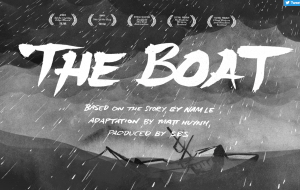
A digital adaptation of Nam Le’s (2008) print-born collection, The Boat is an interactive graphic novel created by Vietnamese-Australian artist Matt Huynh (2015), with both the written and visual narratives exploring the journey of a Vietnamese refugee (Mai) fleeing to Australia via a boat. Shared as a resource through SBS Learn (2021), The Boat hosts six chapters that address the themes of asylum seekers, refugees, conflict, war, and human rights. Engaging viewers through its complex storyline and multimodal features (Aggleton, 2019, pp. 397-403), this graphic novel is suited for viewers 15 years and above. Subsequently, The Boat also requires the viewers to have competent literacy skills, applying higher-order thinking and an ability to empathetically respond to the events depicted (Coiro, 2020, p. 22; Kouvara et al., 2019, p. 6; Cowdy, 2018, p. 22).
The Boat is a free, browser-based text that is reliant on reader interaction and accessible on most devices. For total viewer immersion, headphones are also recommended. The Boat has been accessible online since 2008 and is still available thirteen years later. However, its longevity relies on SBS Australia keeping the domain active and the software compatible with the ever-changing platforms. As the internet has more recently become a domain for social networking, The Boat provides viewers with the options to Tweet, Like or Share the text with a broader community. This implementation extends the narrative experience into the social realm and provides external channels for dialogue and discussion to occur (Serafani & Youngs, 2013, p.).
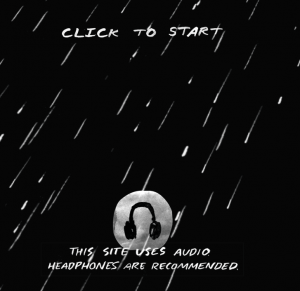
Unlike traditional graphic novels, which utilises page-turning, The Boat implements mouse clicking and scrolling to navigate the text (Sellers, 2006, p.15); with the reader clicking to start and scrolling to interact with the narrative. The Boat progresses by chapters; however, the narrative elements of The Boat are non-linear, meaning that the chapters function more as scenes of importance featuring the protagonist Mai, her tumultuous journey to Australia as a refugee, her life in Vietnam, and her strained relationship with her war-scorn father. Supporting the narratological contrast further and building an empathetic aesthetic, The Boat has been embedded with immersive tools such as atmospheric sound effects, a traditional Vietnamese song (‘The Mother Heart’), and automatic animations which bring the graphic illustrations to life (Cowdy, 2018, p. 22; James & De Kock, 2013, p. 118; Korat & Falk, 2017, p.211). For some, these immersive tools may prove to overstimulate and distract from the narrative being explored. Additionally, flashing lights found in Chapter 4 could potentially trigger seizures, meaning that this text may not be suitable for seizure prone readers. Like traditional graphic novels, The Boat employs multiple-panel images, scene framing, iconic symbols (such as sound and movement lines), speech bubbles and dialogue boxes, handwritten stylisation, and a distinct narrative rhythm; yet, it is digitally distinguishable by its functional features and fragmented reading pathways (Aggleton, 2019, pp. 397-401).
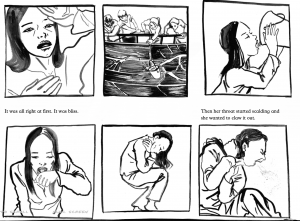
Additionally, four interactive side-stories can be found throughout the novel, demonstrating a shift from temporal orientation (Peterson, 2010, p. 17). Once selected, these side-stories break the linearity of the core narrative and provide supplementary information on Mai’s ancestry, her father’s re-education, the Bidong refugee camp, and the backstory of secondary characters Quyen and Truong. The Boat also diverges beyond traditional graphic novels through altering and augmenting text, lessening the gap between reader and content, and enabling them to feel as though they too are at sea (Yokota & Teale, 2014, p. 579).
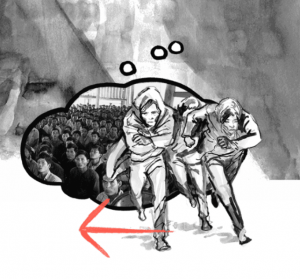
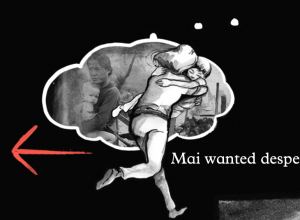
Written as realistic fiction, the striking visuals support an evocative narrative that applies creative devices such as simile, metaphor, symbolism, hyperbole, imagery, allegory, and foreshadowing (Lodge,1993, pp. 59, 139 & 143); and a balanced mix of conventional, critical, creative, and multimodal literacy techniques (Mills & Levido, 2011, pp. 89-90). Upon finishing the narrative component of The Boat, viewers are presented with the post-production credits followed by a montage of photographs and film of Vietnamese refugees. This montage enables the viewers to make a final connection from text-to-world and encourages viewers to reflect through text-to-self (Mills & Levido, 2011, p. 82).
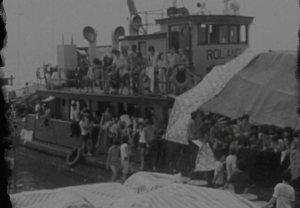
Educationally, The Boat explores the general capabilities of Literacy, ICT, critical and creative thinking, ethical decision making, and intercultural understandings, which are all found within the Australian Curriculum under the cross-curriculum priority ‘Asia and Australian engagement’ (ACARA). The Boat can also be implemented as a resource across multiple disciplines such as English, History, Visual Arts, and Digital Technologies (ACARA). However, due to its sensitive nature and Australia’s refugee community, The Boat is advised to be analysed for its suitability for the intended audience.
Word count: 735
Reference List
Aggleton, J. (2019). Defining digital comics: a British library perspective. Journal of Graphic Novels & Comics, 10(4), pp. 393–409. https://doi.org/10.1080/21504857.2018.1503189
Australian Curriculum, Assessment and Reporting Authority (ACARA). N.D. Australian Curriculum: General capabilities. https://www.australiancurriculum.edu.au/f-10-curriculum/general-capabilities/
Australian Curriculum, Assessment and Reporting Authority (ACARA). N.D. Australian Curriculum: Learning Areas. https://www.australiancurriculum.edu.au/f-10-curriculum/learning-areas/
Coiro, J. (2020). Toward a multifaceted heuristic of digital reading to inform assessment, research, practice, and policy. Reading Research Quarterly, 56(1), 9-31. https://doi.org/10.1002/rrq.302
Cowdy, C. (2018). Grammars of new media: Interactive trans-sensory storytelling and empathic reading praxis in Jessica Anthony and Rodrigo Corral’s Chopsticks. Bookbird: A Journal of International Children’s Literature, 56(1), 20-27. https://muse.jhu.edu/article/687447
James, R. & De Kock, L. (2013). The digital David and the Gutenberg goliath: the rise of the ‘enhanced’ e-book. English Academy Review, 30(1), 107-123. https://doi.org/10.1080/10131752.2013.783394
Korat, O., & Falk, Y. (2017). Ten years after: Revisiting the question of e-book quality as early language and literacy support. Journal of Early Childhood Literacy, 19(2), 206-223. https://doi.org/10.1177/1468798417712105
Kouvara, T. K., Karasoula, S. A., Karachristos, C. V., Stavropoulos, E. C., & Verykios, V. S. (2019). Technology and school unit improvement: Researching, reconsidering, and reconstructing the school context through a multi-thematic digital storytelling project. Social Sciences, 8(2). https://doi.org/10.3390/socsci8020049
Le, N. (2008). The Boat. Penguin Group Australia: Melbourne.
Le, N., & Hugnh, M. (2015). The Boat. SBS Australia. https://www.sbs.com.au/theboat/
Lodge, D. (1993). The art of fiction: Illustrated from classic and modern texts. New York, Viking. silo.pub/…/the-art-of-fiction-illustrated-from-classic-and-modern-texts
Mills, K. A., & Levido, A. (2011). iPed: pedagogy for digital text production. The Reading Teacher, 65(1), 80-91. https://www.researchgate.net/publication/230344648_iPed_Pedagogy_for_Digital_Text_Production
Petersen, R. S. (2010). Comics, Manga, and Graphic Novels a History of Graphic Narratives. Praeger, 2010. https://primo.csu.edu.au/permalink/61CSU_INST/1hkg98a/alma991012590173602357
Special Broadcasting Service, Australia (2021). SBS: Learn. https://www.sbs.com.au/learn/
Sellers, M. (2006). Designing the experience of interactive play., Playing video games: Motives, responses, and consequences, P. Vorderer & J. Bryant (Eds.), pp. 9–22. Lawrence Erlbaum Associates Publishers.https://doi.org/10.1111/j.1460-2466.2006.00323.x
Serafini, F., & Youngs, S. (2013). Reading workshop 2.0. Reading Teacher, 66(5), 401-404. https://doi.org/10.1002/TRTR.01141
Yokota, J. & Teale, W. H. (2014). Picture books and the digital world: educators making informed choices. The Reading Teacher, 34(6). https://doi.org/10.1002/trtr.1262